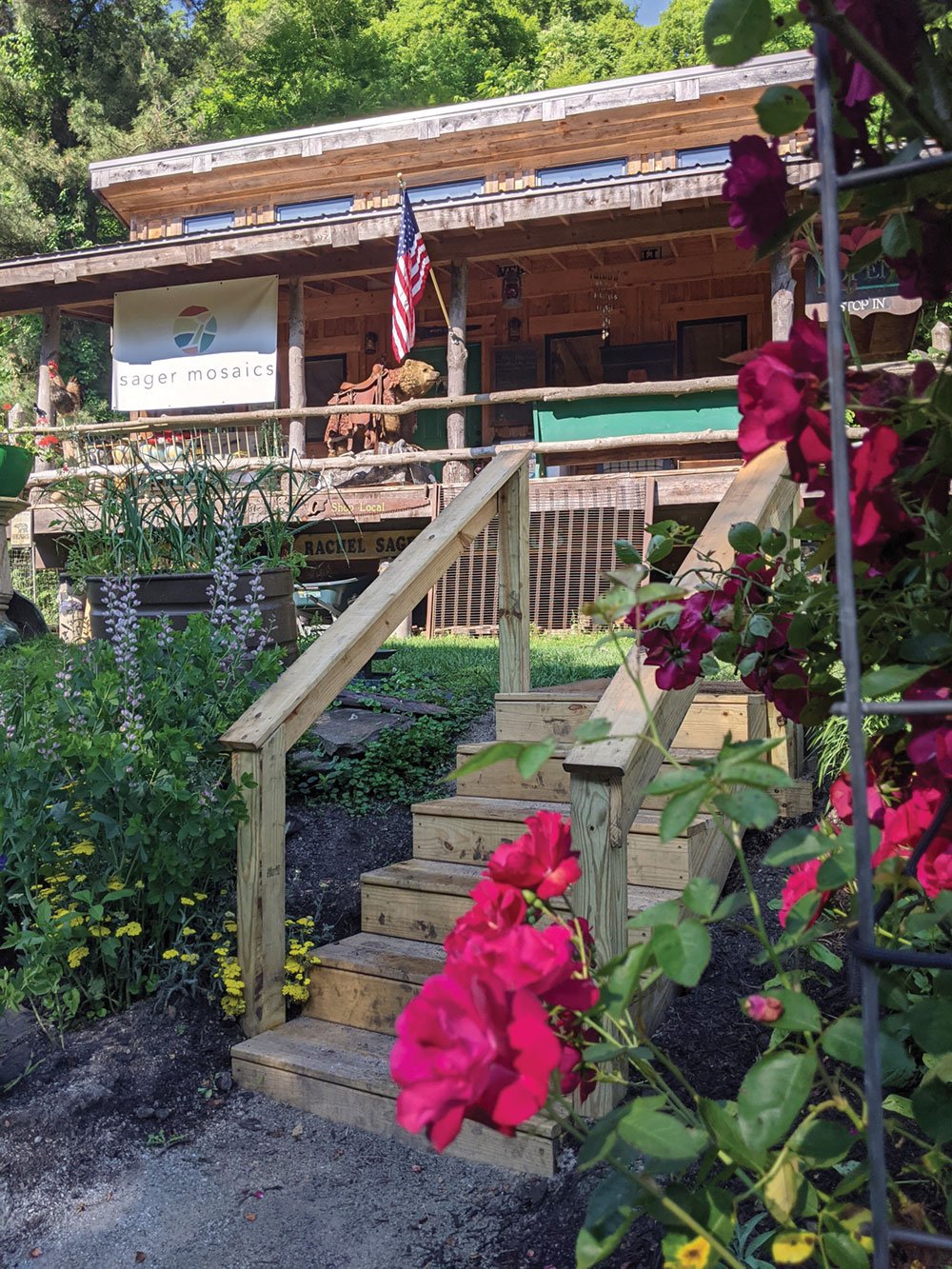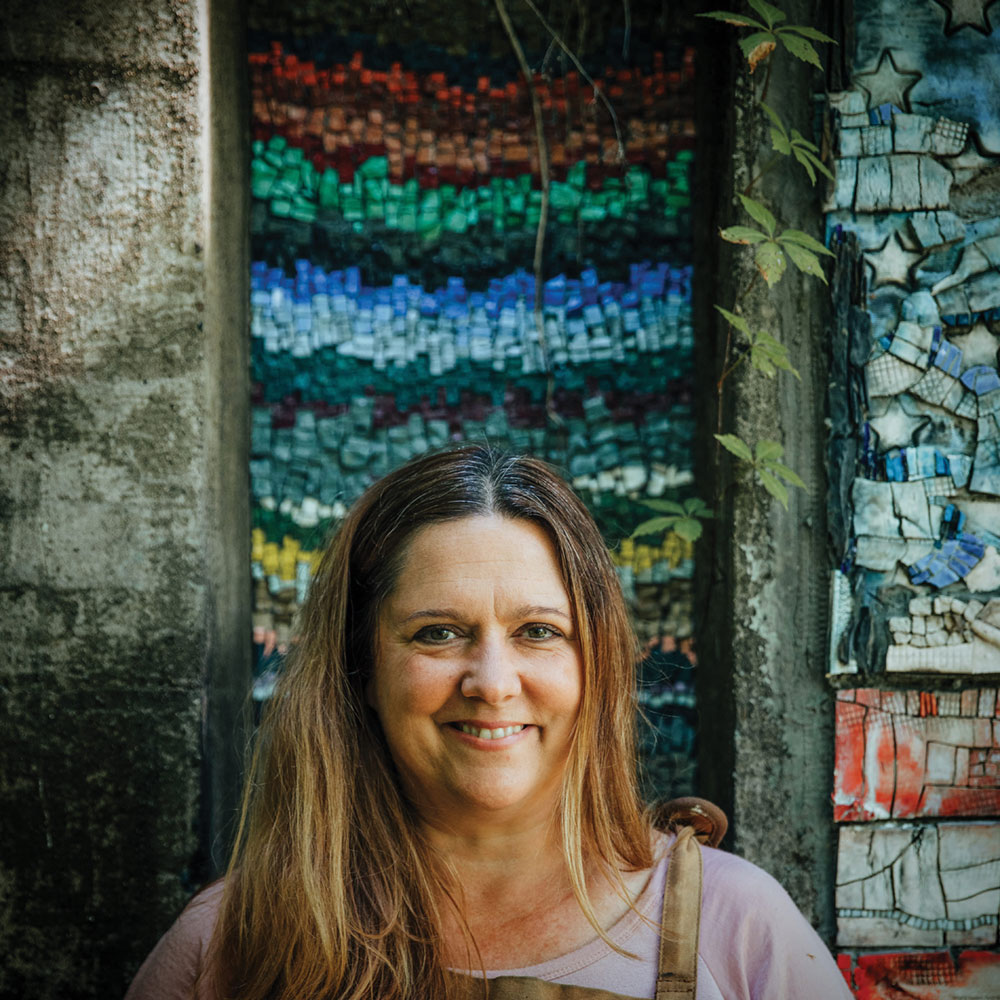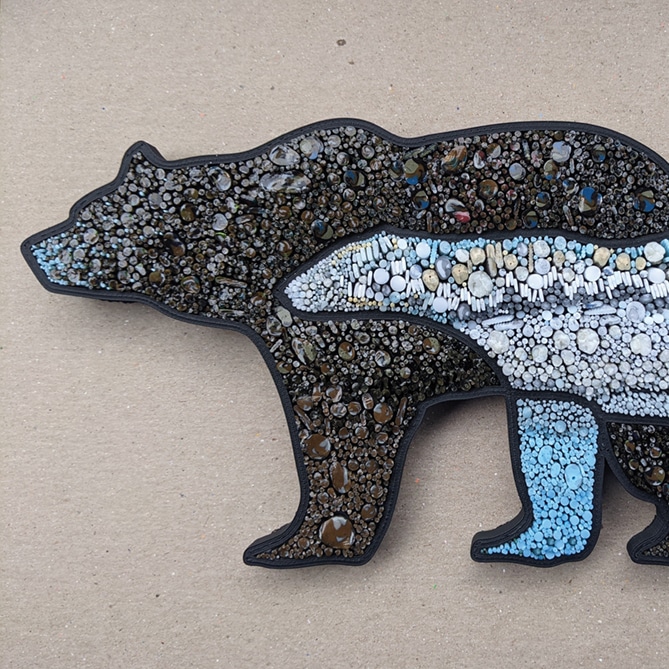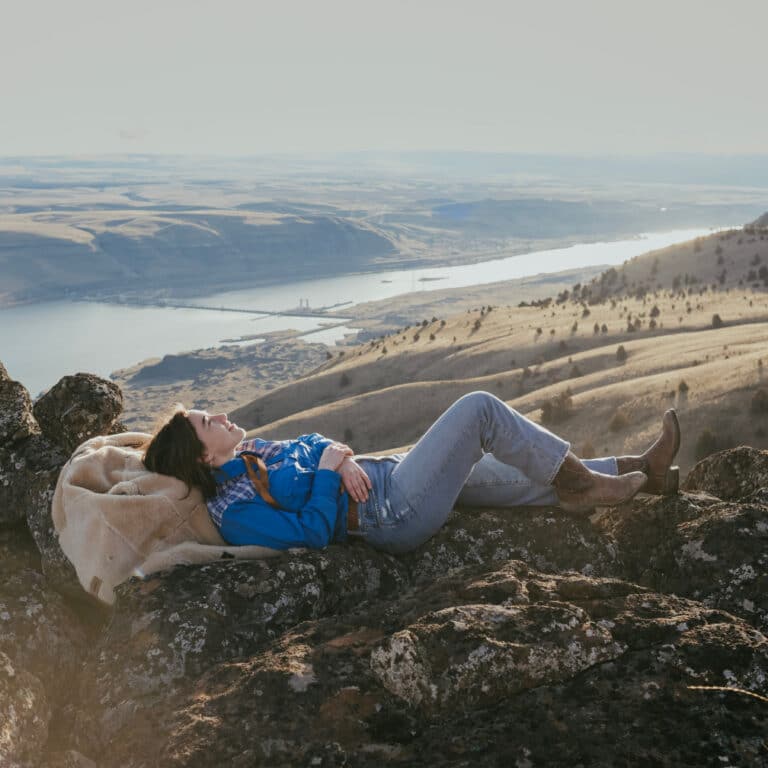A Pennsylvania Mosaic Artist Shares Her Creative Process
The “Forager Mosaicist.” Curator of the Ruins Project. Contemporary artist and teacher. Rachel Sager embraces a number of titles through the work she creates in her Pennsylvania studio. Blending classical techniques and intuitive style with a penchant for found objects, her pieces speak to ideas of place. “Translation: I dig stuff from the ground and put it back together in very particular ways,” she said.
Sager’s journey with mosaics started in 1995 when she answered an ad to work in a small mosaic studio outside of New York City. “My life has never been the same,” she said. In two and a half decades, she has fine-tuned her process while always on the lookout for new ways of approaching an ancient art.
Whether it’s upcycling the parts of an old printer into a stunning display or mentoring a new generation of mosaic artists, Sager’s work is part of the narrative we are writing about who we are and where we come from. “Whether by creating beauty or helping someone see outside of their four walls, artists work with the gifts of illumination,” Sager said. “We don’t necessarily follow the rules that other people do, and this can help us to shake things up. I would go so far as to say, ‘without art, what is the point?’”

The Technique
There’s a word in the world of mosaics—andamento—which refers to the flow and movement of the pieces, a technique at the very heart of the medium. “My process is about the language of mosaic, how each piece fits next to its neighboring piece and the pathways that they then travel together,” Sager said. When starting a piece, she turns to a handful of people she trusts to share thoughts as ideas take shape. Over the years, her dreams have also played an important role in her creative process.
From the very beginning, the materials she chooses to work with play a starring role in the work. “Working from scratch is what keeps me in love with the medium,” Sager said. Using a variety of hammers and other tools, Sager fashions fragments of varying shapes and sizes to then be pieced back together again in a new form. “Breaking up stone is a sacred act,” she said. “Cleaving something that has been sealed up for millions of years. Using a simple stone hammer to create tesserae never gets old. It engages all the senses.”
Sager doesn’t just work in stone. She finds materials for her pieces everywhere, from the banks of the Youghiogheny River to bespoke glass factories in Venice. “I am an equal opportunity material hound,” she said. Whether it’s using glass and ceramic or vintage spoons and factory nuts, the array of different textures and finishes invite the viewer to study the contrasts more closely.
Tour Guide and Instructor
For Sager, opening her studio in southwestern Pennsylvania was a way of coming back home. “I am very connected to the land onto which I was born,” she said. Located on the Great Allegheny Passage near mile marker 104 and the banks of the Youghiogheny River, the studio has become a popular spot among cyclists and visitors looking to soak up part of the local history.
On the same property sit the ruins of a coal mine operation once run by Pittsburgh Coal Company. It is here that Sager has created a space where you can immerse yourself in the world of art and nature with the Ruins Project. Turning the abandoned structures into an outdoor mosaic museum, Sager has transformed walls of cement into a canvas.
Although the project has only been around for six years, Sager has been building up to this work her entire life.
“I come from coal,” she said. “My father, his father, and his father’s father all worked in the business. The people from southwestern Pennsylvania have long been misunderstood by the greater world. I see it as my life’s work to help tell their story, which is also the story of the Industrial Revolution and its aftermath.”
Through thoughtful curation, Sager commissions works from artists all over the world to contribute to the project. “Our goal is not to cover all the walls,” she said. “It is to tell the story. You will experience a mosaic marriage of art, history, and nature. There is only one Ruins and it has different meanings for each person that visits.” From birds and frogs to depictions of coal miners and coal cars, the Ruins speak to the interconnectedness of time, place, and the living world. If you’re planning to be in the area, you can book a tour of the Ruins led by Sager ahead of time to go deeper into the project, the art, and the history.

For those interested in delving into the world of stone and mosaics for themselves, Sager teaches a number of courses through Mosaic Arts Online, including “The Uncommon Canvas with Rachel Sager.” Throughout the online program, Sager challenges artists at all stages in their work and ability to rethink what materials can be used as a frame or canvas, from metals and shells to everyday found objects.
Whether it’s crafting large maps of places made up in her imagination, or tiny, complex pieces that you can hold in your hands, Sager’s mosaic work is a lesson in how the sum of many small parts can lead to something truly extraordinary.
You can find more of Sager’s work at SagerMosaics.com or on Instagram @sagermosaics.
Cover photo: “The Two Bears: Land and Tundra” by Rachel Sager.








